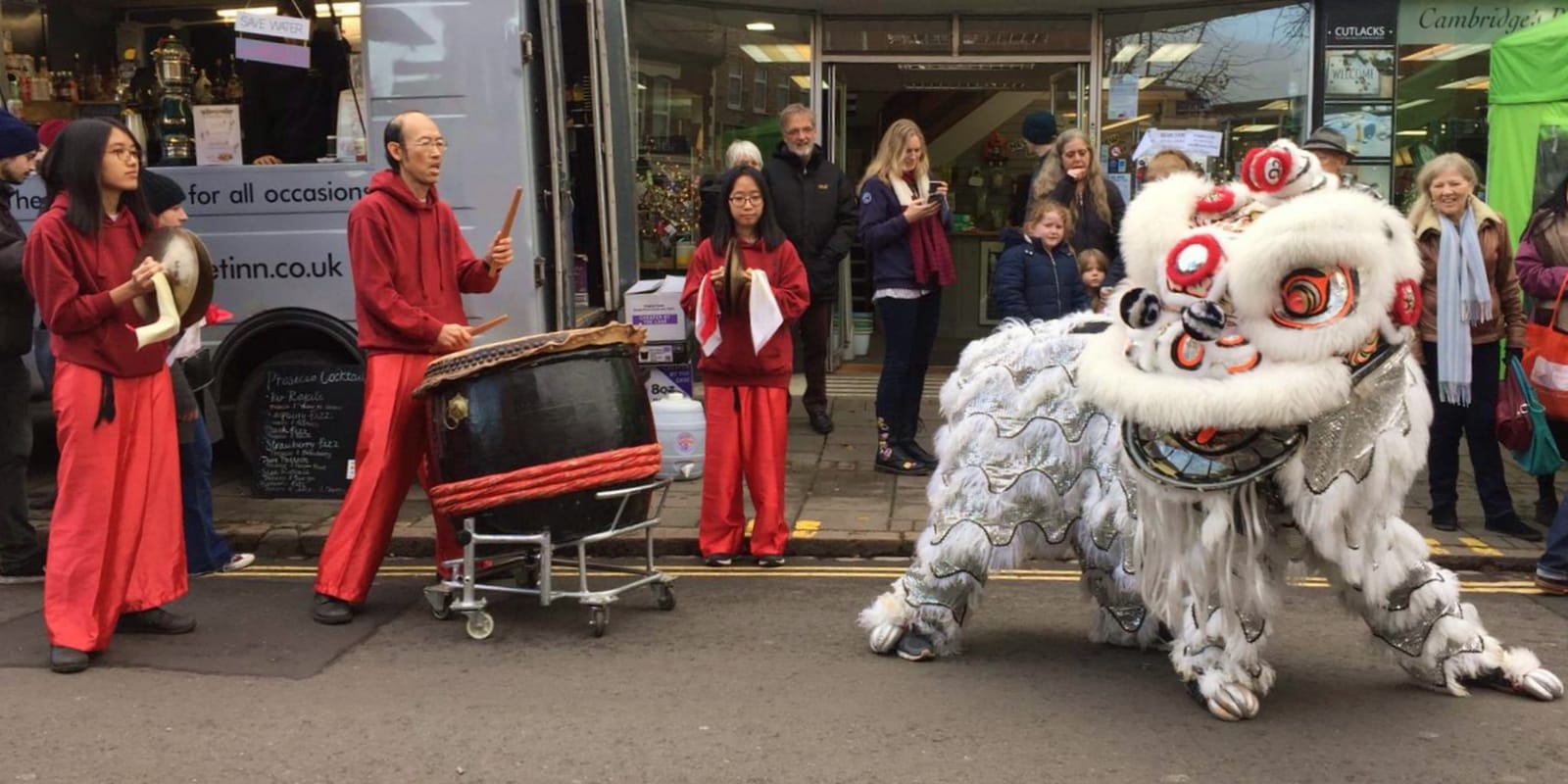
About Lion Dance
The histories of both society and practice.
Lion Dance (舞獅), is a traditional dance form generally associated with China, in which two costumed performers essentially mimic the characteristic movements. The lion is thought to bring good luck and fortune, and so Lion Dance is most frequently seen during the Chinese New Year, although it is not uncommon for it to feature at weddings, opening events and large-scale celebrations, perhaps even alongside a Dragon Dance performance (an easily confused, but nevertheless distinct art form, involving a serpent held on poles by a larger group of performers).
There are two primary forms of Lion Dance, those being the Northern (北獅) and Southern (南獅) styles, both of which originated in China, and spread throughout Asia through diasporic communities. The Northern style is said to be more playful than its counterpart, and the lions themselves are designed to somewhat resemble Pekingese dogs. On the other hand the Southern lion, which is practiced by CULDT, is made with papier-mâché over a bamboo frame, and with layered cloth.
The Southern Lion is in particular associated with the tale of the mythical beast, known as the Nian (年獸). Every Lunar New Year, the Nian is said to terrorise villages, consuming the residents' livestock, crops and children. Eventually in the villagers' efforts to chase away the Nian the people came to understand the beast was afraid of loud noises, bright lights and the colour red. As such a pair of fearless men decided to face the creature with a four-legged beast of their own making, accompanied by firecrackers, gongs and cymbals. And so the practice of Lion Dance was born, performed every Chinese New Year to drive away the Nian and to bring good fortune and prosperity.
CULDT (剑桥大学醒狮团) was founded in 1999 by a Cambridge University undergraduate by the name of Tzehan Yeo. He had been practicing the art for seven years prior to his studies at Cambridge while at home in Singapore, and his desire to further his craft and to share his culture with the wider community led to the creation of the troupe as we know it today.
The style Tzehan Yeo brought over was that of the Hok-san/HeShan (鶴山: Crane Mountain) school of Southern Lion Dance, which has historically been the most prevalently practiced form in Singapore. In contrast to the more Kungfu-heavy Fut-san/FoShan School (Buddha Mountain: 佛山), Hok-san Lion Dance is known for its range of expressions, unique footwork and intense drumming. Its movements, as intended by the school's founder Feng GengZhang mimic those of cats; a feature which continues to be emphasised in CULDT to this day.